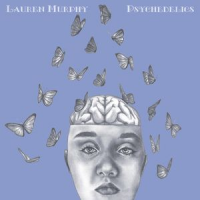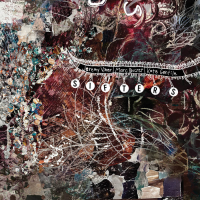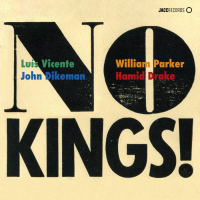Home » Jazz Articles » Album Review » Suomi Morishita: Ein.
Suomi Morishita: Ein.
Introducing the suite-like journey with quiet electronics and vivid acoustic percussion accompanying mysterious arco lines on cello, "Intro" sets the ambiguous mood that stays for the remainder of the set. The first three-note-climb of the subsequent piece "Balder" continues to conceal the core trio and is instead introduced by a pristine and warm clarinet tone, elegantly played by Takanori Suzuki. The trio finally enters after the upbeat, gently curving out romantic melodic forms with intricate polyphonic ambitions that draw through Morishita's compositions like a thread.
Cellist Yuu Miyata and violinist/violist Shinishi Hada follow each other's voices in several sequences throughout the album, forming a fixed front that serves as the foundation for the remaining instruments to add counter-phrases and additional thematic material, though "Elf" reveals an exception of that rule. A haunting piece reserved for the trio only, it sees the two arco players put up against each other while the guitar harmonically mends the two fronts with gentle arpeggios. An inner harmonic rift is at the composition's core, drawing similarities to the approach of expressionists Maurice Ravel and Claude Debussy.
Hints of folk, song and avant-garde contrast strictly classical and chamber-jazz elaborations, as different parts of the ensemble fade in and out of the picture. Dreamscapes are invoked by pizzicato dripping into a percussive backdrop on "Tomte's Room," colliding with the Film Noir aesthetic of "Valö," which finds the strings in company of a bass clarinet, sounding out an ominous motif in homophony before the structure is opened up to a wider harmonic landscape in which the soloists stretch their figurative legs.
Morishita's solo rendition of the title track rings in the final leg of the recording and sees the guitarist pulling an uneasy chord-melody arrangement out of his six strings, unassumingly accompanied by ambient soundscapes. The pick's attack, carefully plucking away over the sonic depth of a woody archtop tone, trickles through the recording like a percussive instrument, triggering the ebbing and flowing of chord movements. Throughout the album, Morishita seamlessly alternates between playing acoustic and semi-acoustic guitars, adding a broad scope of textures with a strong sense for what the respective compositions ask for. What the guitar isn't capable of conjuring, Riko Matsuoka takes care of on the harp.
With "Alla vi barn I Bullerbyn" and "Porter la Porte," the two sole non-original compositions of the album are saved for last. Both demonstrate an immediate-melodic appeal. The former is the title-theme to the screen adaption of childrens' book author Astrid Lindgren's "The Children of Noisy Village," composed by the Swedish bassist Georg Riedel. When listening to an exclusively Japanese crew interpret this sweet Swedish hymn, one can't help but notice the parallels between Swedish and Japanese folk melody. This cinematic element is maintained in the finale, originating from the pen of pianist Masako Hamamura. With its comfortable Boleroesque sway and deeply melancholic quality, the prevailing sense of conflict between the voices finally finds reconciliation here, making "Porter la Porte" a fitting and deeply romantic coda to an emotionally charged and instrumentally engaging journey.
On Ein. Suomi Morishita seamlessly fuses idioms of several centuries and cultures of music with modern aesthetics in the way one has come to expect from progressive labels like ECM Records. Shinya Fukumori, who has recorded on ECM, having directed the session may have something to do with that, but Morishita is clearly in charge of his on fate. His unique voice is deeply informed by a broad repertoire of classical music but exudes the spontaneous allure and flexibility of a jazz player. Brought forth by excellent production values and profound sonic clarity, Morishita's debut album is a humble stroke of genius, making its mark in the rare realm that lies between classical music and jazz in a contemporary way, while keeping one foot in the tradition.
Track Listing
Intro; Balder; Elf; Leaf; Viking's Ship; Tomte's Room; Valö; a-d.i.n-b; Ein; Alla vi barn i Bullerbyn; Porter la Porte.
Personnel
Suomi Morishita
guitarShinchi Hada
violinYuu Miyata
celloTakanori Suzuki
clarinetRiko Matsuoka
harpAyuko Ikeda
percussionMasaki Kai
bassAdditional Instrumentation
Shinya Fukumori: Direction
Album information
Title: Ein. | Year Released: 2021 | Record Label: Tomte's Records
Tags
PREVIOUS / NEXT
Support All About Jazz
 All About Jazz has been a pillar of jazz since 1995, championing it as an art form and, more importantly, supporting the musicians who make it. Our enduring commitment has made "AAJ" one of the most culturally important websites of its kind, read by hundreds of thousands of fans, musicians and industry figures every month.
All About Jazz has been a pillar of jazz since 1995, championing it as an art form and, more importantly, supporting the musicians who make it. Our enduring commitment has made "AAJ" one of the most culturally important websites of its kind, read by hundreds of thousands of fans, musicians and industry figures every month.



















